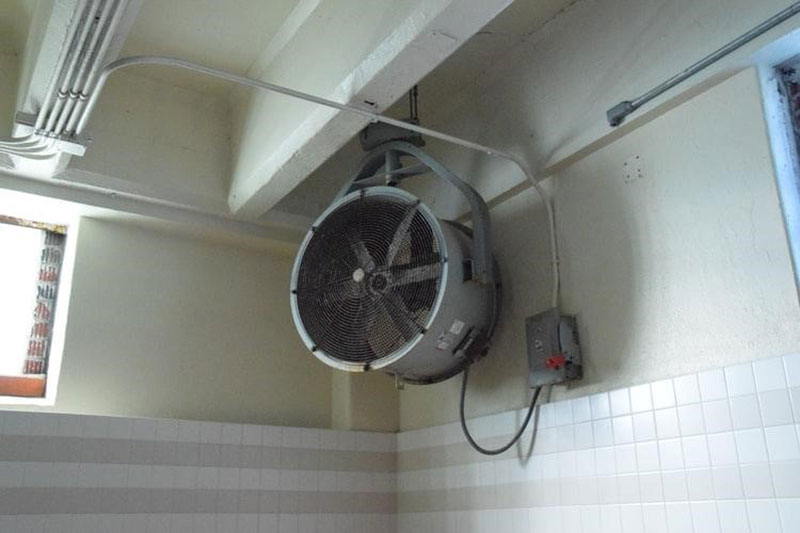Advertisement
When we talk or think about air pollution, our mind strays to the different sources such as cars, buses, planes, trucks, trains, power plants, oil refineries, industrial facilities, factories, cities, wood-burning fireplaces, wind-blown dust, wildfires, and volcanoes. Rarely do we think about how safe the air is in our home. Indoor air pollution can be just as harmful as outdoor pollution. Poor air quality can threaten your family’s health, so it’s essential to ensure your house is well ventilated and keep things that cause pollution out.
Air pollutants vary from contaminants brought in from outside by your pets to dangerous gas leaks. A common source of air pollution is carbon monoxide, which results from natural gas that escapes into your home without being burnt off. Older homes may contain asbestos and lead particles, damaging the lungs when released into the air. Molds and mildew can develop in bathrooms and kitchens, which typically have higher moisture levels than the rest of the house. Even though it is probably impossible to eliminate all of the allergens in your home, there are some simple steps you can take to reduce their number and exposure to them.
Get Air Purifiers
If placed in the most commonly used areas of the house, an air purifier can help reduce some of the tiniest airborne particles. An air purifier is an effective air cleaning system that may help improve and maintain indoor air quality. In particular ionic purifiers, these devices can help capture some of the irritants that may trigger your symptoms. Also, consider a dehumidifier in damp areas, such as a basement, to help prevent mold growth. Additionally, bathrooms are another possible source of mold. Be sure that the bathrooms are properly ventilated and remove any visible mold from fixtures and walls.
To prevent mold and other allergens, maintaining a relative humidity of 30-50% is important. During the summer months, a dehumidifier and air conditioner help reduce moisture in indoor air and effectively control allergens.
Change Filters
Consider having your air ducts cleaned to eliminate trapped dust. Your home’s air conditioning system is constantly working to ensure the ideal temperature. But while they’re cycling through all that air, they’re filtering out some of those common air pollutants, and when filled, the filters need to be changed because they tend to malfunction or stop working if unchanged. It’s not just your AC filter you must change. Your vacuum cleaner, clothes dryer, and kitchen vents should all be checked and cleaned occasionally.
Improve ventilation
Ventilation allows the removal or diluting of indoor airborne contaminants from sources inside the home. Letting in outdoor air is one crucial factor in promoting, protecting, and improving good air quality. A natural ventilation system includes the movement of air through open windows and doors. The presence of excessive moisture can promote dampness and the growth of mold, leading to wheezing, coughing, and asthma attacks in individuals suffering from allergies. Ventilate your kitchen stove directly outside or open a kitchen window when you cook because cooking can be a significant source of indoor air pollution, especially if you have a gas stove.

Avoid Toxic Products
Many products come off as toxic due to their components, e.g. paints, pesticides, dry cleaning products, nail polish, etc. Paints release trace amounts of gases for months after application even though they appear to be thoroughly dried and the smell is gone. Do not store open paint containers indoors. Dry cleaning solvents can be toxic to breathe. Before bringing dry-cleaned items into the home, allow them to air outdoors so that the chemicals do not enter. Pesticides may introduce hazardous chemicals into your home and may pose additional health risks for children and pets. Still, some pests can trigger allergic reactions like wheezing, coughing, and worsen asthma.
Keep Your Home Clean
Coming to a clean house is comforting. What’s better is coming to a house that doesn’t make you sick. To achieve this, you need to clean your carpets and rugs weekly, thereby improving the air quality in your home. Rugs and carpets provide more than just improved comfort to your home. They trap chemicals, dust mites, pet dander, dirt and fungi, and other particles in their many fibers, and vacuuming can make them airborne. You can opt for hardwood flooring. You have to regularly clean your drapes, beddings, and items that can attract allergens.
Often we worry about outdoor air quality, but indoor air quality can also get toxic too. Hence, we must put indoor air purification devices in place. You can achieve good indoor air quality by using air purifiers, keeping the home clean, cleaning your carpets and rugs regularly, changing the ac filter, and keeping every part of your home well ventilated.

